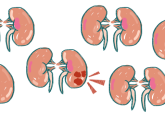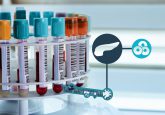Innovative biomarker panel boosts early pancreatic cancer detection

A collaboration of researchers from multiple laboratories has developed a new pancreatic cancer blood test panel combining previously known biomarkers, significantly improving early pancreatic cancer detection compared to the current gold standard.
A team of cancer researchers across the US from the National Cancer Institute’s Early Detection Research Network (EDRN) has developed an experimental blood test to improve early-stage pancreatic cancer detection. This new method is detailed in Cancer Letters.
Pancreatic cancer has one of the worst prognoses among all cancer types. Developing strategies to identify pancreatic cancer patients during the early and localized stages of their disease has been limited by the absence of an affordable and accessible blood test that would be effective for monitoring high-risk populations.
“Catching pancreatic cancer early dramatically improves survival, but our current tools for doing so are limited,” commented lead author Brian Haab from Van Andel Institute (MI, USA).
Previous research has identified numerous candidate biomarkers for early-stage pancreatic ductal adenocarcinoma (PDAC). However, these individual biomarkers demonstrate sensitivity and specificity that do not surpass that of CA19-9, which remains the gold-standard biomarker for pancreatic cancer.
The team suggested utilizing previously identified PDAC biomarkers together combined in a panel to enhance performance beyond that of using CA19-9 alone. To allow precise validation of this biomarker panel across multiple labs, the team employed a common set of specimens, consistent collection methods, uniform sample handling, blinded distribution and independent biostatistical analysis.
“Our results reveal that our combination test improves accurate detection of pancreatic cancer in a lab setting by 27%,” reported Haab.
You may also be interested in:
- Biomarker assay development: qualification vs validation debate
- The new frontier: assessing efficacy and safety of CGTs using biomarkers
- Breakthrough blood test detects deadly brain cancers in just 60 minutes
This new test works by identifying two sugars, CA19-9 and CA199.STRA (STRA), which are generated by pancreatic cancer cells and enter the bloodstream. STRA was identified in 2016 during research on glycans that are structurally associated with CA19-9, and may offer additional benefits for pancreatic cancer detection. STRA has since been validated as both a tissue and serological biomarker for pancreatic cancer. This validation study further indicated that the combination of CA19-9, STRA and another protein biomarker, LRG1, enhanced specificity. This three-panel test accurately identified almost all cases of PDAC and significantly reduced the false positive rate compared to using CA19-9 alone.
The strong performance is likely due to the inclusion of biomarkers that had been identified previously. The selected biomarkers had already been investigated as relevant to pancreatic cancer, creating a solid basis for obtaining reliable results.
This new panel featuring previously identified biomarkers has greatly enhanced the sensitivity and specificity for early pancreatic cancer detection, establishing a basis for future cancer surveillance with serum assay panels. The next stage involves assessing the test’s effectiveness in a clinical laboratory.
“Another take-home message from this study is the importance of having multiple different validated biomarkers for pancreatic cancer,” said Haab. “A one-size-fits-all approach won’t work. It’s encouraging that we have many promising candidates that can be combined to better detect cancer.”






